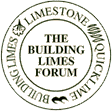Ancient building material still has many uses
 One of the universal building materials prior to the end of the 19th century was lime. Lime was present in various forms in almost every building, from limewash on the walls of cattle byres and cottages to the mortar used on cathedral and castle walls.
One of the universal building materials prior to the end of the 19th century was lime. Lime was present in various forms in almost every building, from limewash on the walls of cattle byres and cottages to the mortar used on cathedral and castle walls.
According to the British Lime Association (BLA), lime was burnt as early as the 4th century BC, when it was first used as a building material. Today, the universal term ‘lime’ includes quicklime, hydrated lime, milk of lime and dolomitic lime.

Symposium reflects new thinking on lime use
Masons and conservators across the UK and beyond are rediscovering traditional mortars through research, use and experience. They are moving away from the default specification of natural hydraulic limes for conservation works and are determined to practise like-for-like repair.
Nowadays, says the BLA: “Lime is one of those usually unseen products that have a profound effect on our daily lives. It is used in many important industrial processes such as steel manufacture, the building/construction industry, in food production processes, agriculture and many environmental applications.... to name just a few.”
In recent years there has been a blossoming of the use of lime in the repair and restoration of ancient buildings – often putting right the disasters caused by ill-advised repairs in the past using cement.
The BLA website outlines number of uses of lime in traditional building:
Limewash
Limewash is a traditional method of painting walls with a colour base that allows the masonry to breathe, providing both protection and aesthetic appeal.
Limewash is also widely used in agricultural buildings, due to its germicidal qualities coupled with its extreme ease of application and low cost.
Conservation
Buildings pre-1900 would not have been built with cement but with a lime mortar. Therefore, in order to conserve these buildings it is essential to use similar materials when doing so. To introduce cement or cementitious mortar would cause decaying due to the difference in chemical composition of cement and would inevitably result in irreversible damage. Hydraulic lime mortars, hydraulic lime plasters and renders and lime putty are therefore all used for the restoration of our built heritage.
The restoration of these buildings is often important for surrounding communities, providing them with lasting historical and cultural heritage, prolonging the buildings use as a tourist attraction, and often even increasing the aesthetic appeal of the local area.
For more information visit the BLA website at www.britishlime.org.















